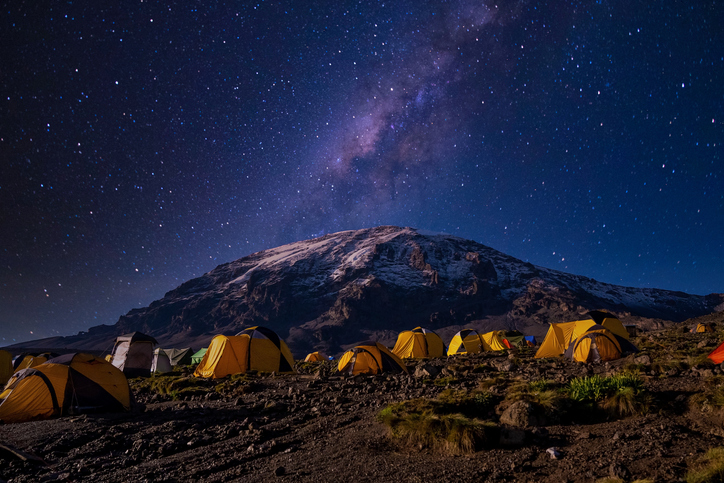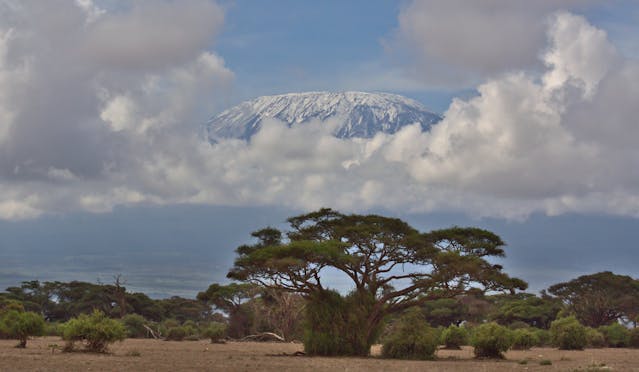Introduction

Climbing Mount Kilimanjaro is a real bucket-list adventure. Standing at 5,895m and known as “the roof of Africa”, it is the highest peak in Africa. Each year, tens of thousands of trekkers are drawn to its slopes with 40-50% successfully reaching the summit. Whilst Kilimanjaro isn’t a technical climb, the altitude makes it a serious challenge. Many trekkers underestimate the risks of altitude sickness, each year around 1,000 trekkers are evacuated due to medical emergencies. That’s why having specialist trekking travel insurance for Kilimanjaro is essential. Standard travel policies often exclude trekking above 3,000–4,000m, leaving you unprotected.
In this guide, we’ll explore the specific risks of Kilimanjaro, what to look for in high altitude trekking travel insurance for Kilimanjaro, and how to choose a policy that protects you to the summit.
Why Won’t My Standard Travel Insurance Cover Me for Climbing Kilimanjaro?
Most standard travel insurance policies classify climbing Kilimanjaro and other high altitude treks as an extreme activity. While they may cover hiking at a lower altitude, exclusions usually apply above certain elevations. Other common restrictions include:
- Only covering trekking as an incidental activity rather than as the main purpose of a trip.
- No personal accident or personal liability cover when trekking above a stated elevation. Personal liability cover protects you if you are liable to pay damages due to accidentally injuring someone or causing loss or damage to their property.
Without specialist high altitude trekking insurance, you could face evacuation or hospital bills running into thousands of pounds.
The Specific Risks of Trekking Kilimanjaro
Altitude Sickness
Almost every trekker feels the effects of altitude on Kilimanjaro. Acute Mountain Sickness (AMS) can start above 2,500m and worsens as you climb higher. Severe cases may escalate to High Altitude Pulmonary Edema (HAPE) or High Altitude Cerebral Edema (HACE), both of which can be life-threatening without descent and treatment.
Evacuation Challenges
If required, medical evacuations can be complex. Helicopters can only land in designated areas such as Barranco and Barafu Camps and Horombo Hut (Marangu Route) and only when conditions allow. Insurance that includes helicopter evacuation is vital.
Weather and Terrain
Kilimanjaro has five ecological zones meaning trekkers encounter everything from tropical rainforest to arctic-like summit conditions. Sudden weather changes, cold nights, and minor injuries can all become more serious risks.
What Should Travel Insurance for Kilimanjaro Cover?
When choosing travel insurance for Kilimanjaro, make sure your policy includes:
- Altitude cover – Kilimanjaro’s summit is 5,895m, so your policy must cover trekking up to at least 6,000m.
- Emergency medical expenses – hospital treatment and medication in Tanzania or abroad
- Helicopter and ground evacuation – for rapid descent and transfer to medical care
- Repatriation – cover for transport to your home country after a serious medical incident
- Trip cancellation – protection for prepaid trip costs if illness, injury or emergencies disrupt your plans
- Baggage cover – for lost, stolen or delayed gear
- Personal liability – if you injure someone else or damage property during your trek
- 24 emergency assistance – to arrange evacuation, medical treatment and onward travel if required

Tips For Trekking Safely and Keeping your Cover Valid
- Choose a reputable trekking company – book through an established operator with good reviews or personal recommendations.
- Acclimatise gradually – select a longer route, such as the 7–8 day Lemosho or Machame itineraries, to allow your body time to adjust.
- Declare medical conditions honestly – always disclose any pre-existing conditions and read the policy conditions carefully when choosing insurance.
- Listen to your body – if you develop symptoms of altitude sickness, stop trekking, inform your guide and descend if necessary. Don’t ignore headaches, dizziness, or nausea.
- Be prepared for changing weather – pack gear for everything from tropical heat to freezing summit nights. Conditions can change suddenly, so follow the kit list provided by your operator.
Travel Insurance for Kilimanjaro Frequently Asked Questions
How Much Does Evacuation From Kilimanjaro Cost?
Helicopter evacuation typically costs several thousand pounds. Without insurance, you will need to pay upfront.
Does Travel Insurance For Kilimanjaro Have an Age Limit?
Some insurance policies include an upper age limit, with cover capped at ages such as 59. Always check the policy conditions.
Do I Need a Guide To Climb Kilimanjaro?
Yes. Tanzanian law requires all climbers to be accompanied by a licensed guide. Not only is it illegal to attempt Kilimanjaro alone, but trekking without a guide would also invalidate most travel insurance for Kilimanjaro policies.
Final Thoughts
Summiting Kilimanjaro is a once-in-a-lifetime opportunity but the altitude and environment make it a serious challenge. Standard travel insurance isn’t enough. You need high altitude trekking insurance tailored for climbs up to 6,000m that includes medical cover, helicopter evacuation, and trip protection.
By choosing the right travel insurance for Kilimanjaro, you can focus on the climb and the unforgettable moment of standing on the roof of Africa.
✅ See our curated list of travel insurance for trekking policies
✅ Read our complete guide to high altitude trekking travel insurance
